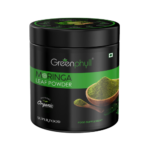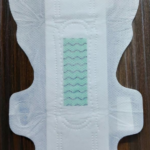What Color is Blood in the Veins?
When it involves the human body, there are many interesting elements to discover. One such facet is the shade of blood uromexil forte lekarna in the veins. While lots of people might think that blood is constantly red, there are some fascinating factors at play that establish the look of blood in our blood vessels. In this article, we will certainly look into the scientific research behind the color of blood in the blood vessels as well as uncover the fact behind this fascinating sensation.
Prior to we dive into the information, allow’s establish a foundational understanding of blood. Blood is a vital fluid that flows throughout our bodies, supplying oxygen and also nutrients to our cells and also removing waste items. It consists of different parts, including red blood cells, white blood cells, platelets, and plasma. Nonetheless, it is the red blood cells that play a significant function in identifying the shade of blood in the veins.
The Role of Hemoglobin
Hemoglobin is a protein found in red blood cells that is responsible for carrying oxygen from the lungs to the remainder of the body. It contains an iron molecule that gives blood its red shade. When oxygenated, or rich in oxygen, blood shows up intense red. This oxygen-rich blood is pumped from the heart to the arteries, which carry it to numerous parts of the body.
As soon as the oxygen is supplied, blood returns to the heart via the veins. At this moment, it comes to be deoxygenated, suggesting it has much less oxygen as well as shows up darker in color. This deoxygenated blood is commonly described as crimson or maroon. So, the color of blood in the blood vessels is not the vivid red frequently related to oxygenated blood.
It is necessary to keep in mind that the shade of blood in the veins can vary from person to person. Aspects such as skin tone, vein size, as well as total health and wellness can influence the regarded shade. In people with fair skin, veins might appear much more famous and also offer the impression of a blue tone. This is due to the method light scatters off the surrounding cells and also shows back to our eyes.
The Influence of Light
The appearance of blood in the veins can additionally be affected by exterior factors, specifically lighting problems. When checked out under natural or white light, the shade of deoxygenated blood in the veins is usually darker. Nevertheless, specific lighting problems can produce an impression of various shades.
For example, under fluorescent lighting, blood in the blood vessels may appear much more green. This is because fluorescent lights give off a diaform plus цена higher percentage of green light, altering our assumption of shade. Likewise, under yellow or cozy lights, blood in the blood vessels could appear somewhat orange or brownish. These variations must not be confused with the actual shade of the blood but instead the method our eyes perceive it under certain illumination problems.
To get a more precise depiction of the shade of blood in the veins, doctor often rely upon specialized tools, such as near-infrared imaging. This modern technology enables them to envision the blood flow in real-time and also keep in mind any kind of abnormalities. It gives an extra unbiased analysis of the blood’s look, free from the influence of external variables.
Capillaries vs. Arteries: The Difference in Shade
While we have actually talked about the color of blood in the capillaries, it is likewise worth noting the distinction between blood vessels and arteries. Arteries bring oxygenated blood away from the heart to supply it to the body’s cells. In contrast, blood vessels deliver deoxygenated blood back to the heart for oxygenation.
Arterial blood is normally brighter in shade because of its oxygen-rich state. It appears dynamic red when watched straight, as it carries freshly oxygenated blood to nurture the body organs as well as cells. On the other hand, venous blood, as pointed out previously, is darker in shade due to the lower oxygen material.
- Arterial blood: Bright red, oxygenated
- Venous blood: Dark red or maroon, deoxygenated
The difference in shade in between arterial as well as venous blood is instrumental in clinical treatments, as it assists medical care experts determine whether they are taking care of an artery or a capillary. This knowledge is vital for jobs such as drawing blood, administering drug, or carrying out surgical treatments.
Conclusion: The Interesting Color of Blood in the Veins
The shade of blood in the blood vessels, although various from what the majority of people expect, is a fascinating aspect of human physiology. Deoxygenated blood appears darker as well as even more maroon in shade as a result of the lack of oxygen, while oxygenated blood is bright red. Factors such as hemoglobin content, illumination conditions, as well as individual variants can affect how we regard the color of blood in the veins.
Recognizing real color of blood in the blood vessels has functional ramifications in the medical field, assisting medical care specialists accurately detect and treat various problems. By acknowledging the difference in shade in between arterial and venous blood, clinical staff can browse treatments better as well as guarantee optimal person treatment.
Next time you happen to glance at your blood vessels, remember that the blood streaming through them is a complicated fluid that plays an important function in keeping our bodies working. Its color might vary, however its relevance stays unmodified.









